Abstract
Fifty three children aged 6 years old who had weighed less than 1251 g at birth without cerebral palsy and receiving mainstream education, were entered into a controlled study of motor skills. The index and control children were matched by age, sex, and school. The index group were considered by their teachers to have similar academic performances to their index group were considered by their teachers to have similar academic performances to their controls, although two index cases were receiving remedial teaching. On the test of motor impairment extremely low birthweight children had significantly more motor difficulties than controls. In addition, the index group had more minor neurological signs, lower intelligence quotients, and more adverse behavioural traits. The higher motor impairment scores among index children were independent of differences in intelligence quotient between the two groups. There was no association between impairment score and the presence or degree of periventricular haemorrhage or periventricular leucomalacia on neonatal cerebral ultrasound. Children with Apgar scores at five minutes of less than 7 had significantly higher impairment scores compared with those whose scores were 7 or more. Three perinatal factors (Apgar score at five minutes, neonatal septicaemia, and abnormal movements) explained 32% of the variance in impairment score at the age of 6 years. In children who do not have cerebral palsy perinatal factors may still be important in the development of motor skills. The presence of subtle neuromotor impairments at 6 years of age has implications for schooling that need further evaluation.
Full text
PDF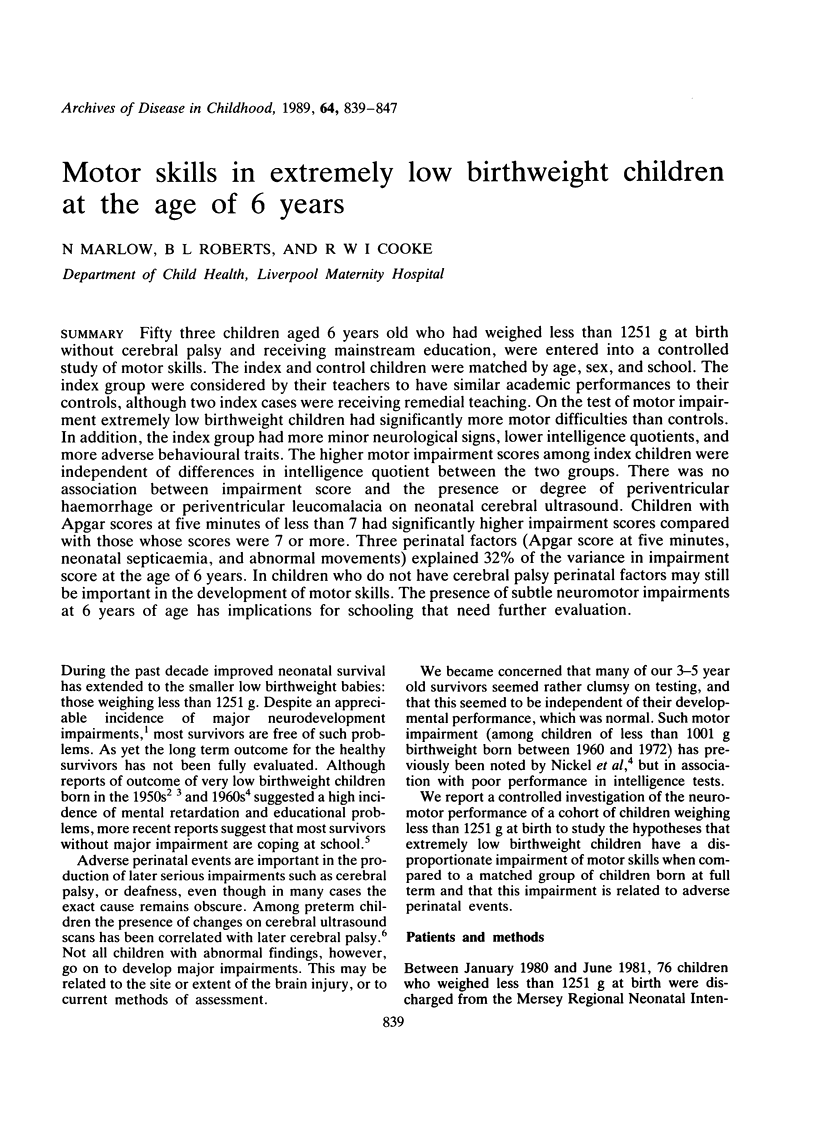
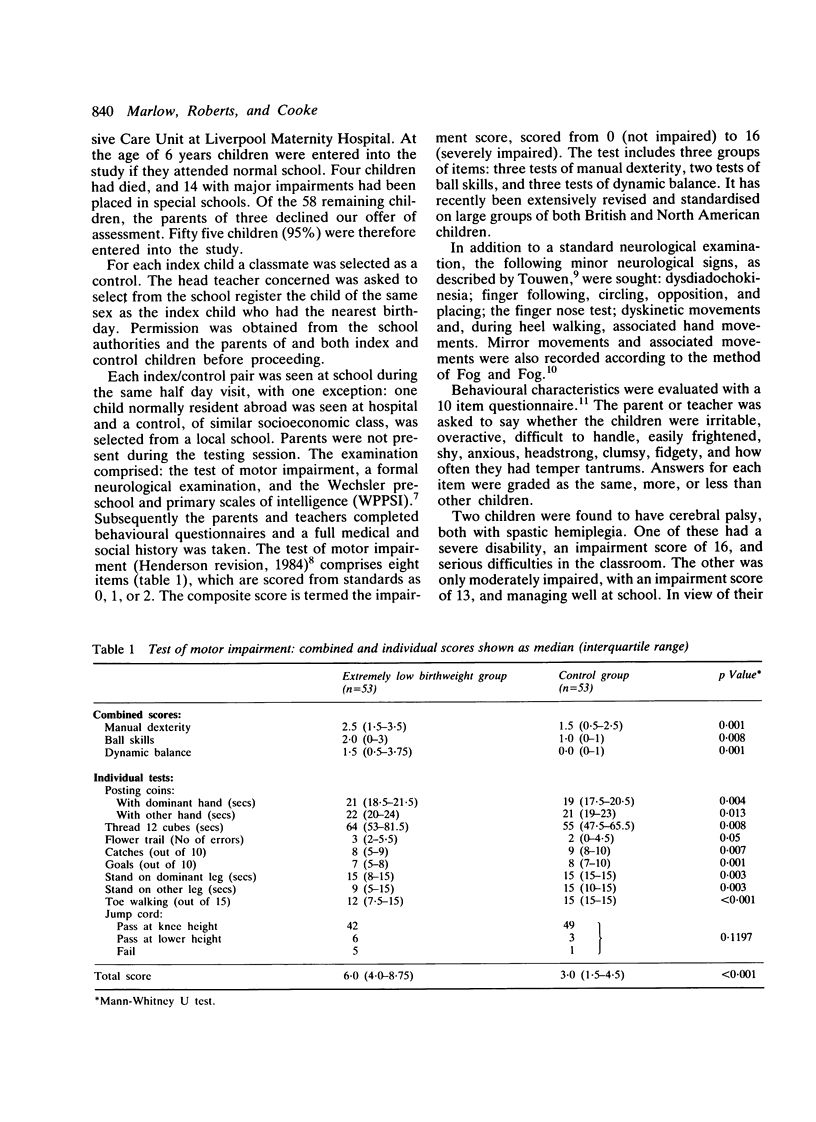
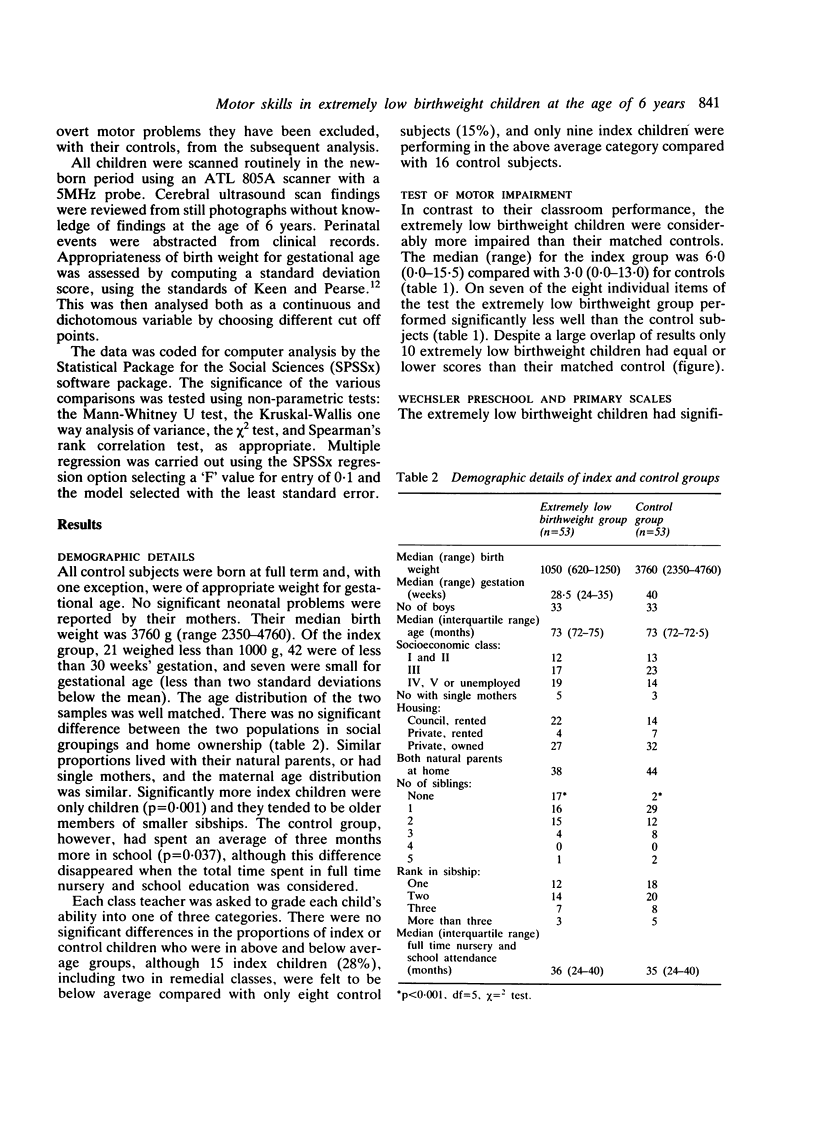
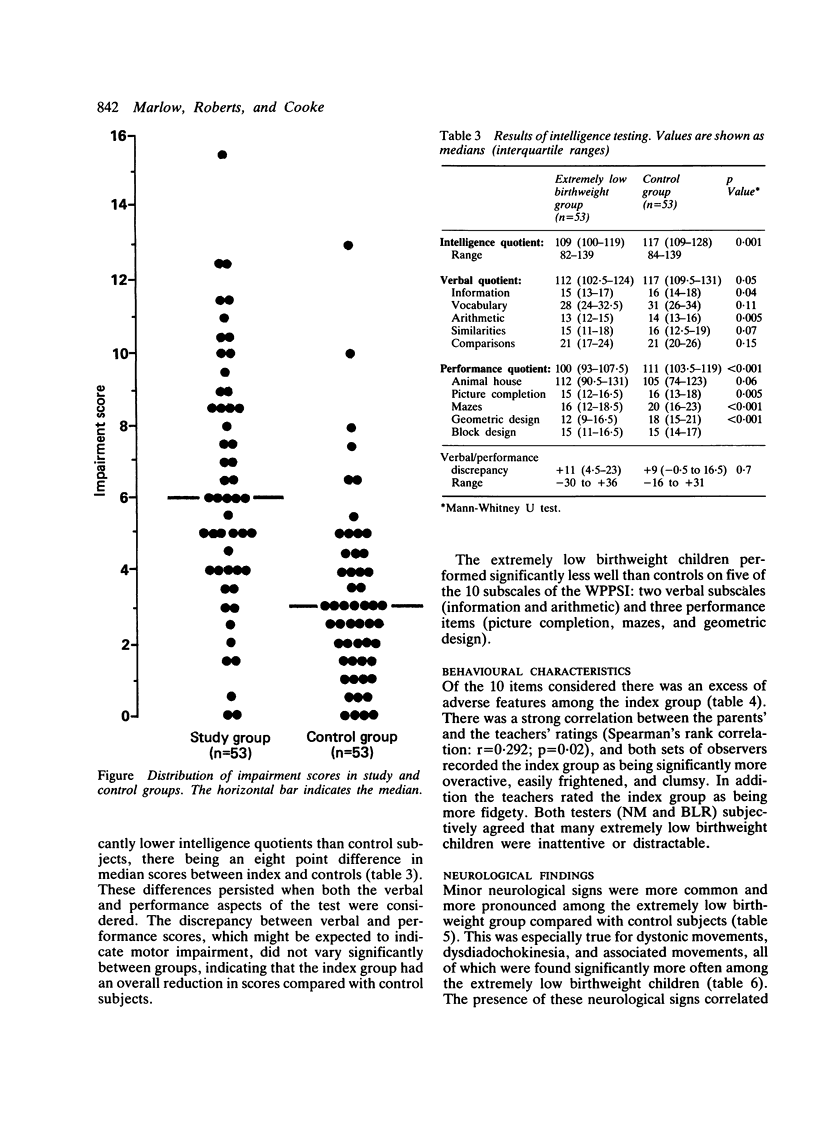
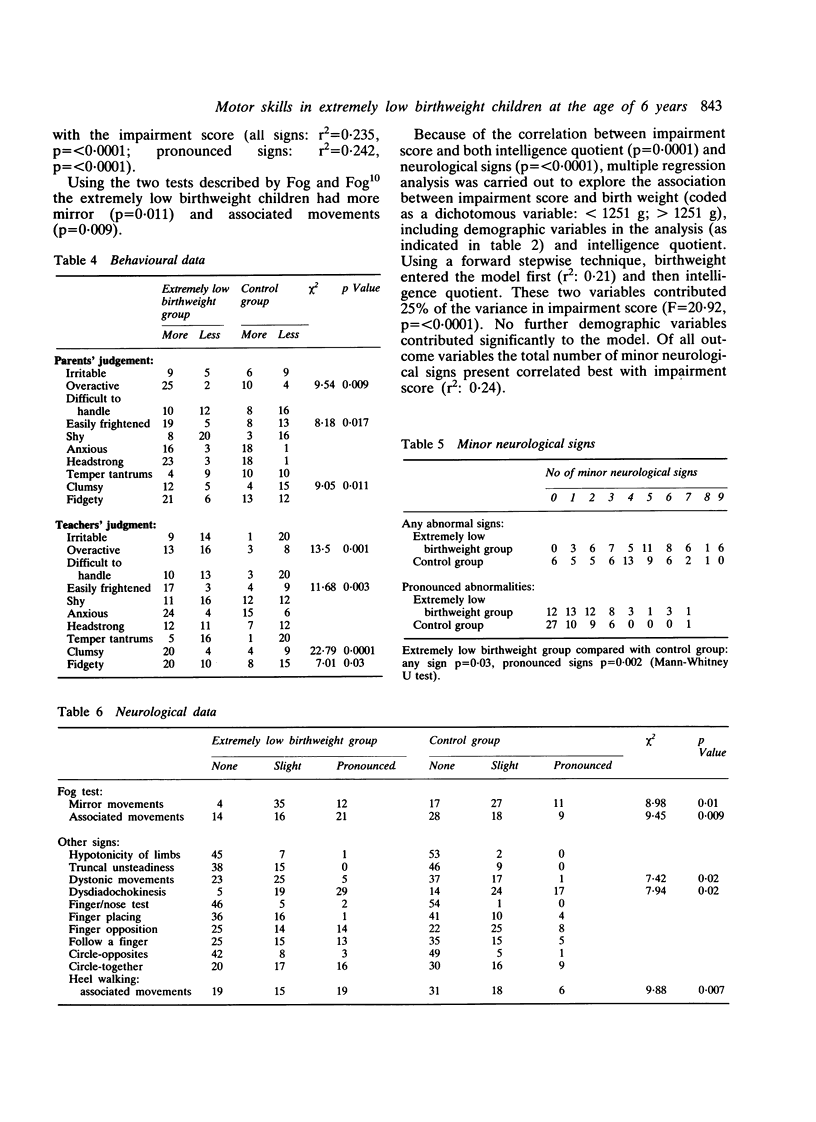
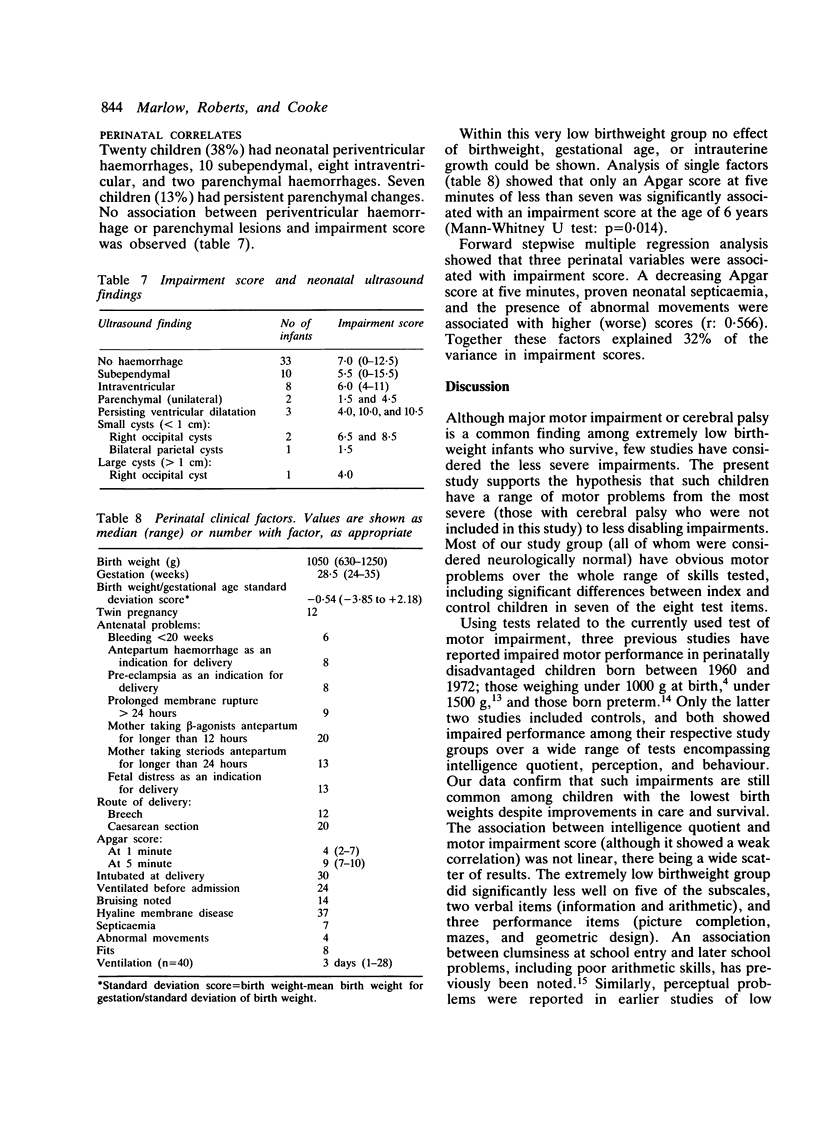
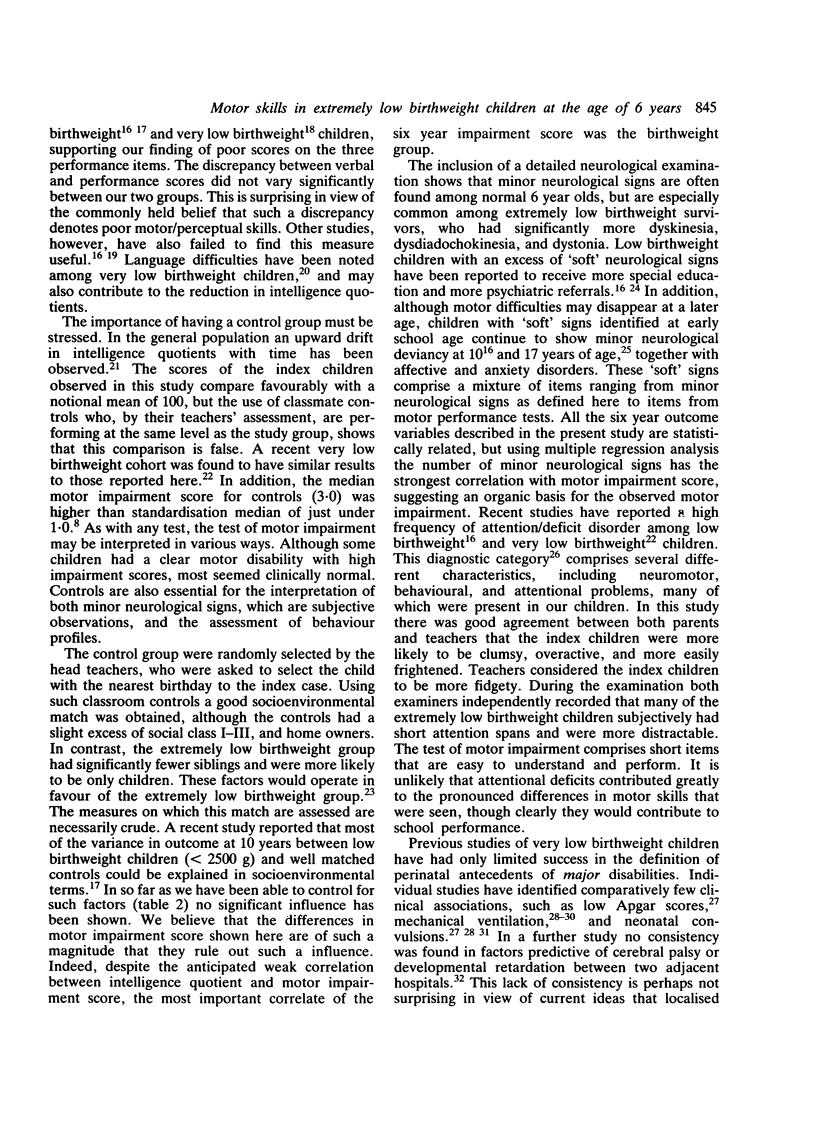
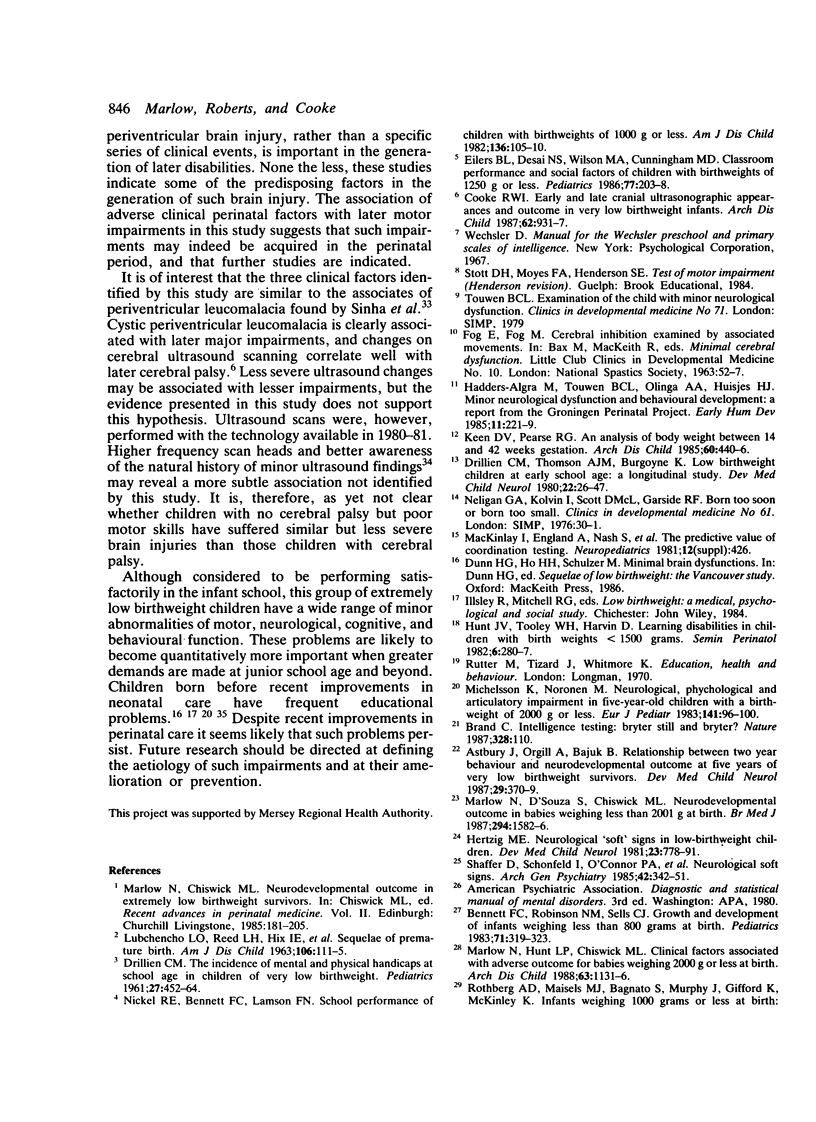
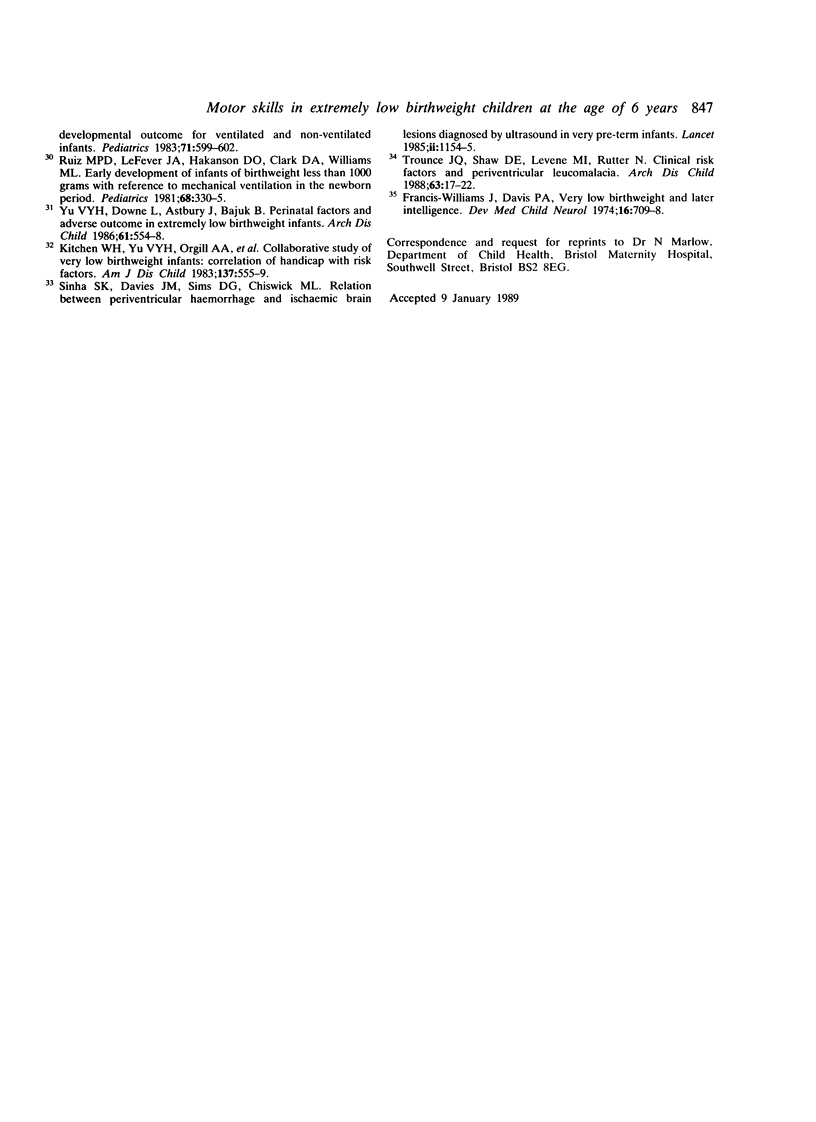
Selected References
These references are in PubMed. This may not be the complete list of references from this article.
- Astbury J., Orgill A., Bajuk B. Relationship between two-year behaviour and neurodevelopmental outcome at five years of very low-birthweight survivors. Dev Med Child Neurol. 1987 Jun;29(3):370–379. doi: 10.1111/j.1469-8749.1987.tb02491.x. [DOI] [PubMed] [Google Scholar]
- Bennett F. C., Robinson N. M., Sells C. J. Growth and development of infants weighing less than 800 grams at birth. Pediatrics. 1983 Mar;71(3):319–323. [PubMed] [Google Scholar]
- Cooke R. W. Early and late cranial ultrasonographic appearances and outcome in very low birthweight infants. Arch Dis Child. 1987 Sep;62(9):931–937. doi: 10.1136/adc.62.9.931. [DOI] [PMC free article] [PubMed] [Google Scholar]
- DRILLIEN C. M. The incidence of mental and physical handicaps in school-age children of very low birth weight. Pediatrics. 1961 Mar;27:452–464. [PubMed] [Google Scholar]
- Drillien C. M., Thomson A. J., Burgoyne K. Low-birthweight children at early school-age: a longitudinal study. Dev Med Child Neurol. 1980 Feb;22(1):26–47. doi: 10.1111/j.1469-8749.1980.tb04303.x. [DOI] [PubMed] [Google Scholar]
- Eilers B. L., Desai N. S., Wilson M. A., Cunningham M. D. Classroom performance and social factors of children with birth weights of 1,250 grams or less: follow-up at 5 to 8 years of age. Pediatrics. 1986 Feb;77(2):203–208. [PubMed] [Google Scholar]
- Francis-Williams J., Davies P. A. Very low birthweight and later intelligence. Dev Med Child Neurol. 1974 Dec;16(6):709–728. doi: 10.1111/j.1469-8749.1974.tb03392.x. [DOI] [PubMed] [Google Scholar]
- Hadders-Algra M., Touwen B. C., Olinga A. A., Huisjes H. J. Minor neurological dysfunction and behavioural development. A report from the Groningen Perinatal Project. Early Hum Dev. 1985 Sep;11(3-4):221–229. doi: 10.1016/0378-3782(85)90076-3. [DOI] [PubMed] [Google Scholar]
- Hertzig M. E. Neurological 'soft' signs in low-birthweight children. Dev Med Child Neurol. 1981 Dec;23(6):778–791. doi: 10.1111/j.1469-8749.1981.tb02066.x. [DOI] [PubMed] [Google Scholar]
- Hunt J. V., Tooley W. H., Harvin D. Learning disabilities in children with birth weights less than or equal to 1500 grams. Semin Perinatol. 1982 Oct;6(4):280–287. [PubMed] [Google Scholar]
- Keen D. V., Pearse R. G. Birthweight between 14 and 42 weeks' gestation. Arch Dis Child. 1985 May;60(5):440–446. doi: 10.1136/adc.60.5.440. [DOI] [PMC free article] [PubMed] [Google Scholar]
- Kitchen W. H., Yu V. Y., Orgill A. A., Ford G., Rickards A., Astbury J., Lissenden J. V., Bajuk B. Collaborative study of very-low-birth-weight infants. Correlation of handicap with risk factors. Am J Dis Child. 1983 Jun;137(6):555–559. doi: 10.1001/archpedi.1983.02140320031005. [DOI] [PubMed] [Google Scholar]
- Marlow N., D'Souza S. W., Chiswick M. L. Neurodevelopmental outcome in babies weighing less than 2001 g at birth. Br Med J (Clin Res Ed) 1987 Jun 20;294(6587):1582–1586. doi: 10.1136/bmj.294.6587.1582. [DOI] [PMC free article] [PubMed] [Google Scholar]
- Marlow N., Hunt L. P., Chiswick M. L. Clinical factors associated with adverse outcome for babies weighing 2000 g or less at birth. Arch Dis Child. 1988 Oct;63(10 Spec No):1131–1136. doi: 10.1136/adc.63.10_spec_no.1131. [DOI] [PMC free article] [PubMed] [Google Scholar]
- Michelsson K., Noronen M. Neurological, psychological and articulatory impairment in five-year-old children with a birthweight of 2000 g or less. Eur J Pediatr. 1983 Dec;141(2):96–100. doi: 10.1007/BF00496798. [DOI] [PubMed] [Google Scholar]
- Nickel R. E., Bennett F. C., Lamson F. N. School performance of children with birth weights of 1,000 g or less. Am J Dis Child. 1982 Feb;136(2):105–110. doi: 10.1001/archpedi.1982.03970380017004. [DOI] [PubMed] [Google Scholar]
- Rothberg A. D., Maisels M. J., Bagnato S., Murphy J., Gifford K., McKinley K. Infants weighing 1,000 grams or less at birth: developmental outcome for ventilated and nonventilated infants. Pediatrics. 1983 Apr;71(4):599–602. [PubMed] [Google Scholar]
- Ruiz M. P., LeFever J. A., Hakanson D. O., Clark D. A., Williams M. L. Early development of infants of birth weight less than 1,000 grams with reference to mechanical ventilation in newborn period. Pediatrics. 1981 Sep;68(3):330–335. [PubMed] [Google Scholar]
- Shaffer D., Schonfeld I., O'Connor P. A., Stokman C., Trautman P., Shafer S., Ng S. Neurological soft signs. Their relationship to psychiatric disorder and intelligence in childhood and adolescence. Arch Gen Psychiatry. 1985 Apr;42(4):342–351. doi: 10.1001/archpsyc.1985.01790270028003. [DOI] [PubMed] [Google Scholar]
- Sinha S. K., Davies J. M., Sims D. G., Chiswick M. L. Relation between periventricular haemorrhage and ischaemic brain lesions diagnosed by ultrasound in very pre-term infants. Lancet. 1985 Nov 23;2(8465):1154–1156. doi: 10.1016/s0140-6736(85)92680-7. [DOI] [PubMed] [Google Scholar]
- Trounce J. Q., Shaw D. E., Levene M. I., Rutter N. Clinical risk factors and periventricular leucomalacia. Arch Dis Child. 1988 Jan;63(1):17–22. doi: 10.1136/adc.63.1.17. [DOI] [PMC free article] [PubMed] [Google Scholar]
- Yu V. Y., Downe L., Astbury J., Bajuk B. Perinatal factors and adverse outcome in extremely low birthweight infants. Arch Dis Child. 1986 Jun;61(6):554–558. doi: 10.1136/adc.61.6.554. [DOI] [PMC free article] [PubMed] [Google Scholar]


